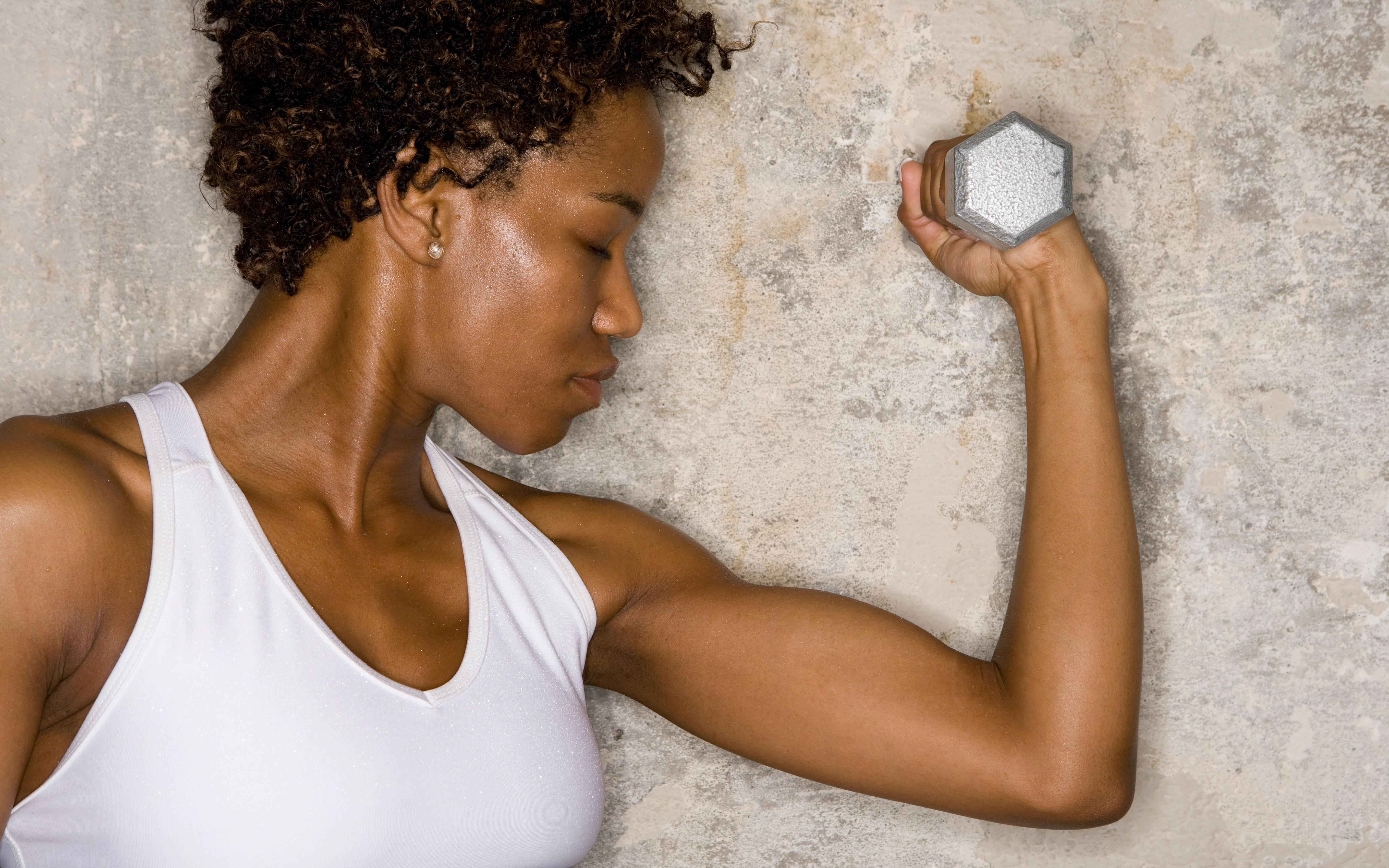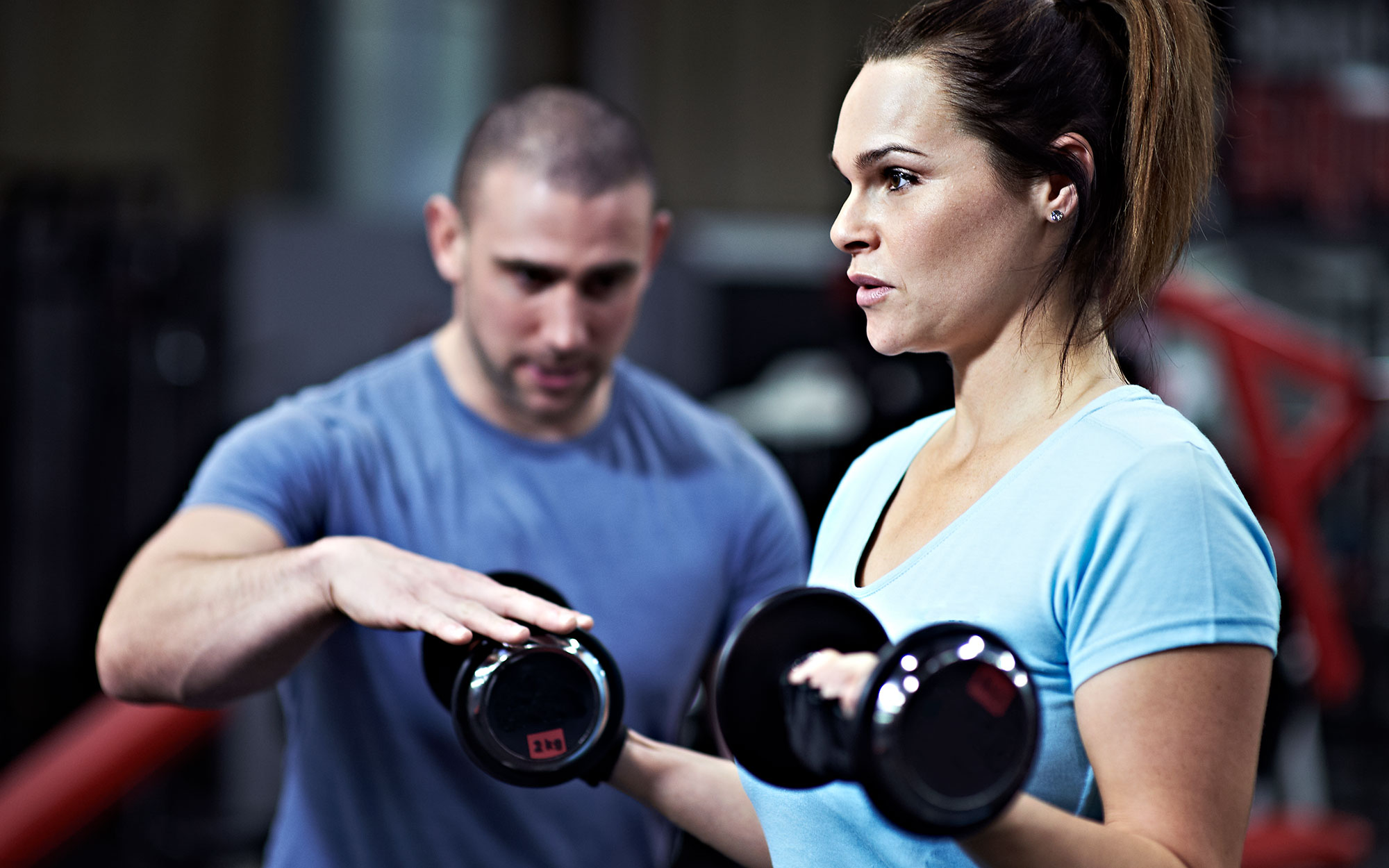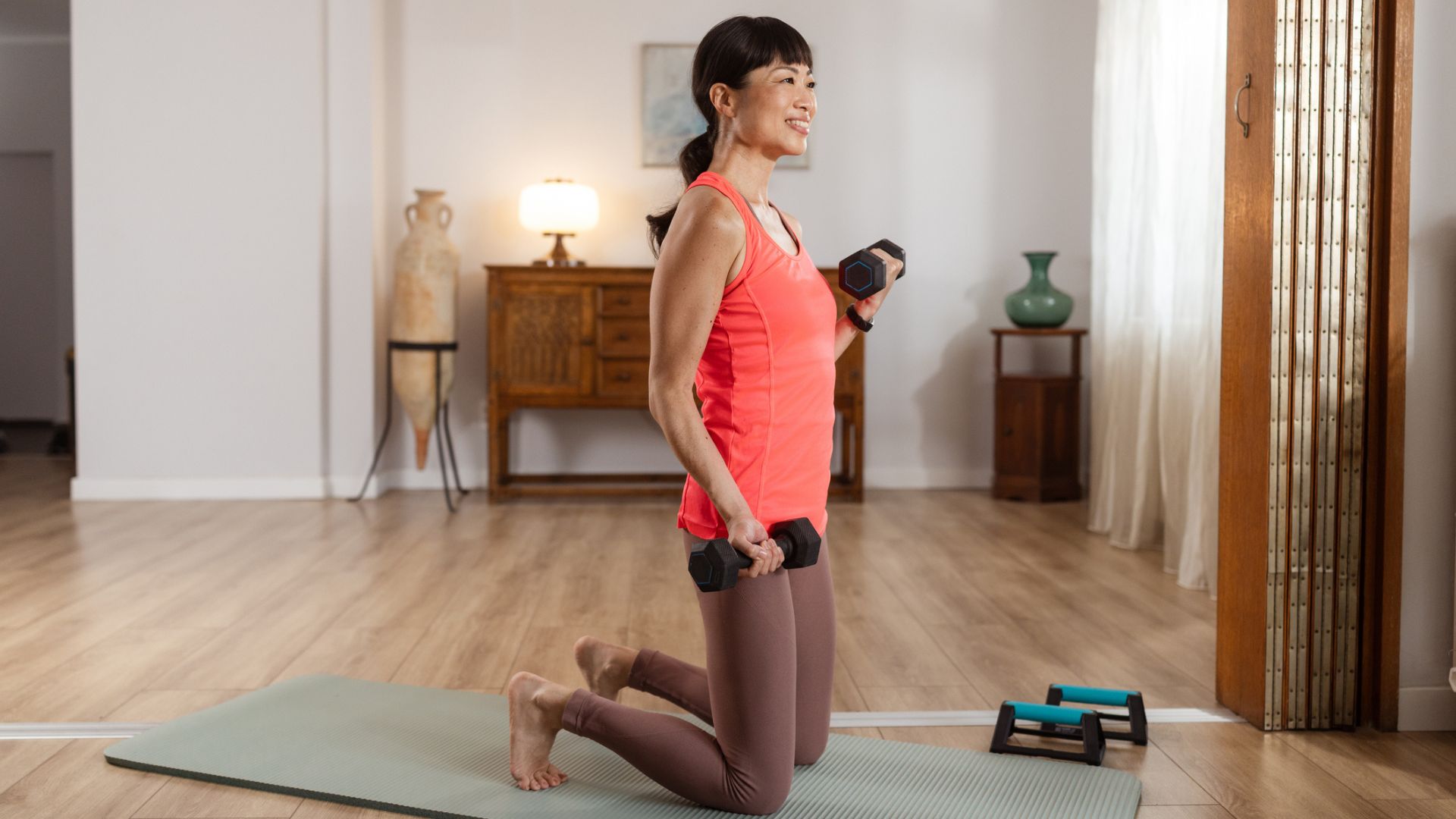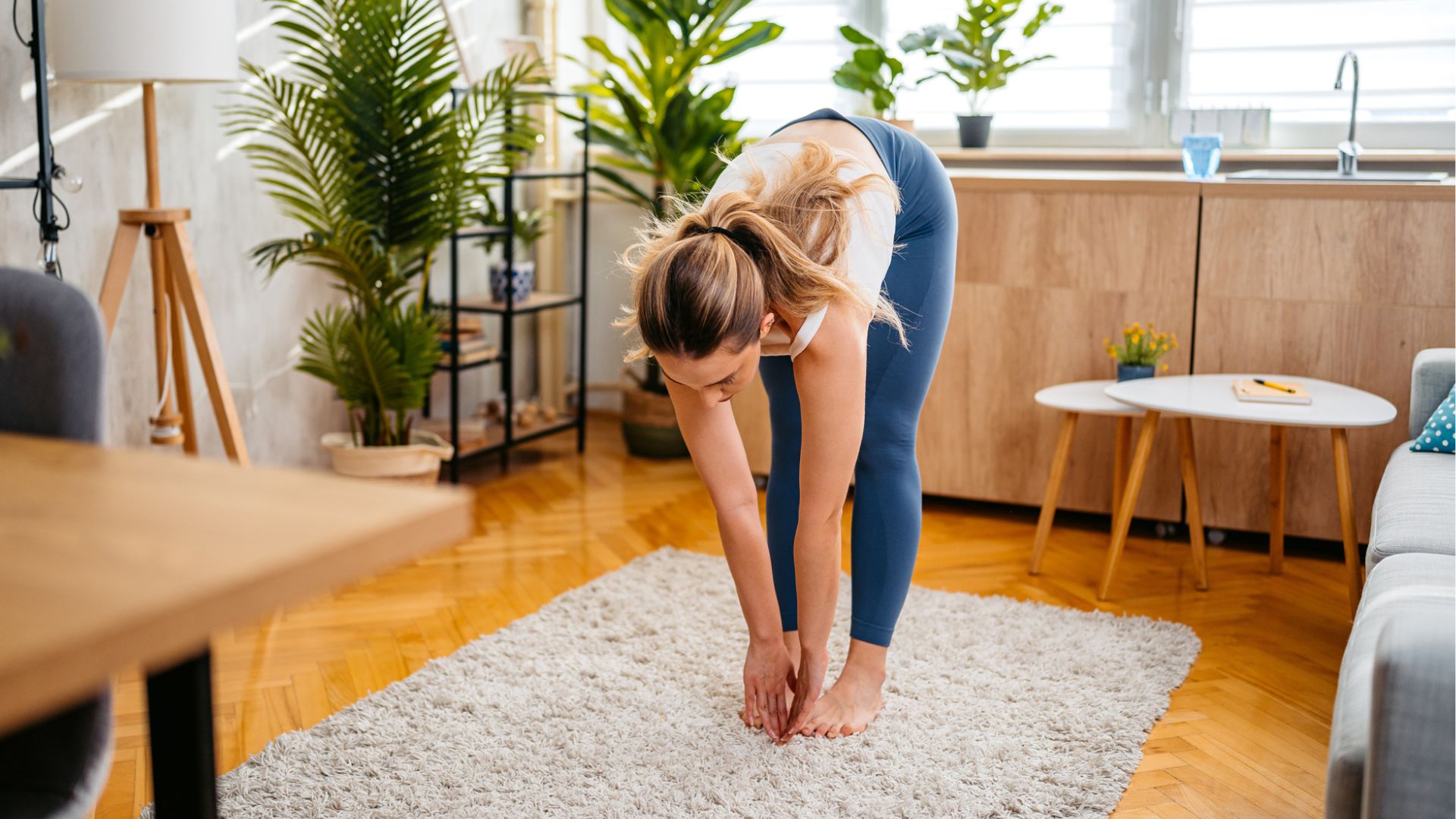10 ways to maximise dumbbell workouts for ultimate strength and definition
Training with dumbbells is a top way to get stronger - here's how to make the most of these great weights


Working out with dumbbells is a great way to shape, tone and strengthen the bits other exercises don’t reach - but various factors can affect the results you’ll achieve from this type of resistance training.
To keep you on the right track, we’ve put together the ultimate guide to getting the most out of your dumbbell workout sessions. Read on to discover how to get the most out of of this small but mighty bit of fit kit.
1. Start out with the right weights
Dumbbells come in all shapes and sizes, and finding the dumbbells with the correct weight you is more important than many people realise (if you're looking for a set to use at home, check out our pick of the best adjustable dumbbells).
Working out what you hope to achieve with your workouts is a crucial first step. “Start by establishing your fitness goals, so you can decide how many repetitions of each exercise you’ll need to do,” says Steven Virtue, Fitness Development Manager at Total Fitness.
“Once you’ve figured this out, choose a weight which will make the last few reps of your set challenging. Bear in mind that this will involve a certain amount of trial and error. I recommend starting small, using a 2kg for your upper body and 5kg for your lower body. You can increase the weight if you’re finding the reps too easy.”
2. Stick to a schedule
Keeping track of your progress will allow you to reach your goals in less time, and with less risk of injury.
“Consistency is key when it comes to reaping the benefits of resistance training,” says Ray Penamante, head trainer at F45 Camden. “Aim to train two or three times a week, setting aside 30 to 45 minutes for every workout.
Get the Fit&Well Newsletter
Start your week with achievable workout ideas, health tips and wellbeing advice in your inbox.
"For example, start the week strong with a leg day (squats and hinges), moving to an upper body focus midweek, and end the week on a high with a HIIT, circuit-style workout with timed intervals to get the heart levels up. The latter will improve your cardiovascular fitness and muscular endurance.”
For a great 30-day training program, check out our full-body dumbbell workout challenge.
3. Keep your chin up (literally)
Although some moves – such as certain lunges which are designed to target the glutes – require the head to be lowered, most dumbbell exercises require the head to be raised, and letting it drop is one of the most common dumbbell-related workout mistakes.
“Leaning too far forward will instantly bring your body out of alignment,” warns Daniel Herman, qualified personal trainer and founder of sport nutrition company Bio-Synergy .
“Keep your head up, look forward, and keep your shoulders relaxed and away from your ears. Your body shouldn’t feel forced or rigid, but in complete control and contracted. If you’re leaning forward too much, or your body feels out of control, I would recommend dropping the weight.”
4. Up your load as you improve
Avoid getting stuck in a dumbbell-related workout rut by continually evaluating your progress, and considering whether it’s time to alter the weight of your dumbbells to help you get the most out of your fitness regime.
“Once you reach the point when the last few reps of your workout are feeling comfortable, it’s time to switch to a heavier weight,” says Total Fitness' Steven Virtue. “Keep a journal and write down the reps you’ve done, and the weights you used for each exercise, noting down how your body is responding to the workout. This will help you to figure out when the workout is no longer challenging your body.”
5. Pay attention to your form
Different dumbbell exercises require different form techniques, but the key thing is to always keep form in mind. “It’s something which should always be your top priority, because the correct form helps you reduce the risk of injury,” says Steven.
“The more fatigued you are, the more your form breaks down, so making sure that you are working with the right weight will help."
Steven's top tip is to to avoid using momentum, or swinging and bouncing the dumbbells, in order to get through the exercises in less time. "This will hinder your form and will mean that the impact of the workout is taken away from the muscles you’re hoping to condition," he says.
6. Consult an expert
If you’re concerned about your form, or have a sneaking suspicion you’re not getting the most out of your workouts, consider a session with a personal trainer. Watching videos or using the best home workout apps can be incredibly useful, but one-on-one guidance is invaluable. Also check out our guide on how to deadlift.
“It’s difficult to provide general advice when it comes to issues such as overcompensation, because I would want to check the person’s form,” says Kasumi Miyake from PureGym Leeds. “My top tip would be to book a session with a personal trainer, who will be able to evaluate your posture and help you work out which part of your body needs a little form adjustment.”

7. Refuel after your workout
And we don't mean by 'rewarding' yourself with a post-workout burger or candy bar! Instead, you should pay attention to giving your body exactly what it needs to recover and refuel, so that you are able to do it all over again next time you come to train.
“Dumbbells are hard work!” says David Wiener, training specialist at AI-based fitness and lifestyle coaching app Freeletics. “So make sure you refuel after your workout. My favourite post-workout protein shake is Bulk Powders’ White Chocolate Coconut Vegan Protein, mixed with some oat milk and frozen fruit.”
8. Get your grip right
It’s all too easy to underestimate the importance of the correct grip when working out with dumbbells. Doing so will increase the risk of injury and make your fitness goals even harder to achieve.
“Dumbbells should be held with three main grips, which will differ depending on the exercise that you’re performing,” says Chloe Twist, a personal trainer at fitness education provider OriGym. These are:
- Overhand grip: palms facing downwards
- Underhand grip: palms facing upwards
- Neutral grip: palms facing inwards
If you're unsure which grip you should be using for each of your dumbbell exercises, consult a personal trainer or ask at your local gym.
Chloe adds: "Typically, dumbbells should be held firmly but not so much so that the grip takes the strain away from the muscle group that you are aiming to target.”
9. Get some support
No, we’re not talking about getting your friends to cheer you on as you power through your workouts. Instead, this is the kind of support that will help you prevent injury and get the most out of your workout.
“Using a support will provide something to drive against and prevents you swinging the weight upwards,” says Emily Servante, a personal trainer at London's Ultimate Performance Kensington. “Using a support behind the elbows can be incredibly beneficial. This could be something such a wooden board, or simply try standing with your elbows pressed back against the wall.”
10. Focus on your breath
As with any exercise, good breath work is crucial.
“Breathe from the diaphragm rather than your chest,” says David Wiener. “This will allow you to take full, deep breaths which fill your lungs with oxygen – something your body requires when working out.
He adds: "When using dumbbells, exhale as you lift the weight to curl, and then inhale as you’re lowering the weight.”
Tamara is based in Surrey in the UK and is a freelance journalist who's equally passionate about cycling, snowboarding and traveling. Tamara's writing has covered workout clothes for women for better fitness sessions as well as covering topics including which bathroom scales to choose. Tamara has also provided expert advice for Fit&Well with tips and tricks for getting the most of a weight-based workout.
-
 I’m a personal trainer and these are some of my favourite exercises to build core and upper body strength at home
I’m a personal trainer and these are some of my favourite exercises to build core and upper body strength at homeAll you need is a set of dumbbells for this kneeling workout
By Maddy Biddulph
-
 It only takes two minutes a day to build up the flexibility required to touch your toes, says a top mobility coach
It only takes two minutes a day to build up the flexibility required to touch your toes, says a top mobility coachMeasure, reach and repeat says Roger Frampton
By Sam Rider